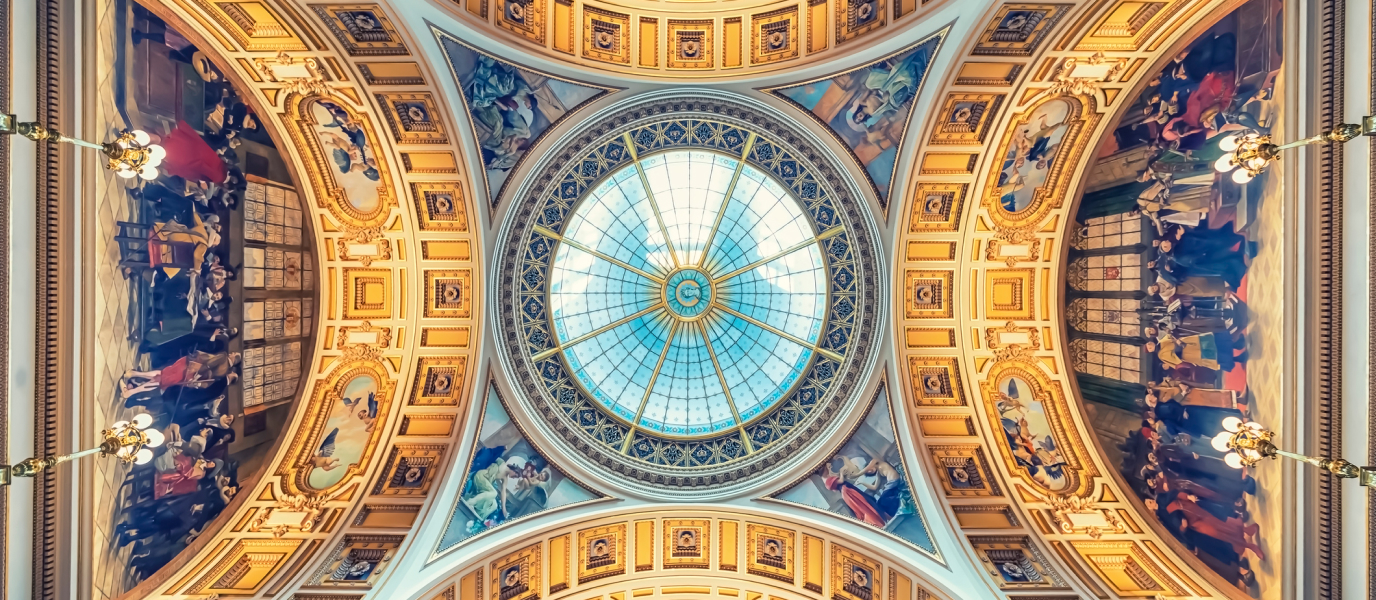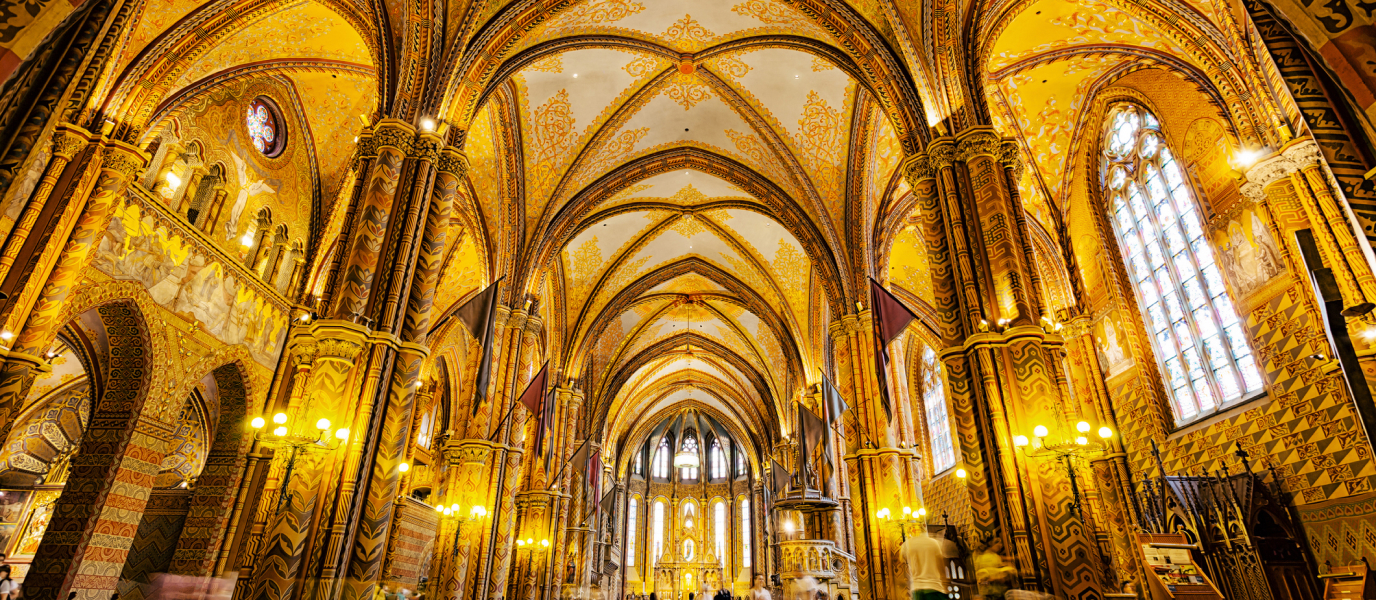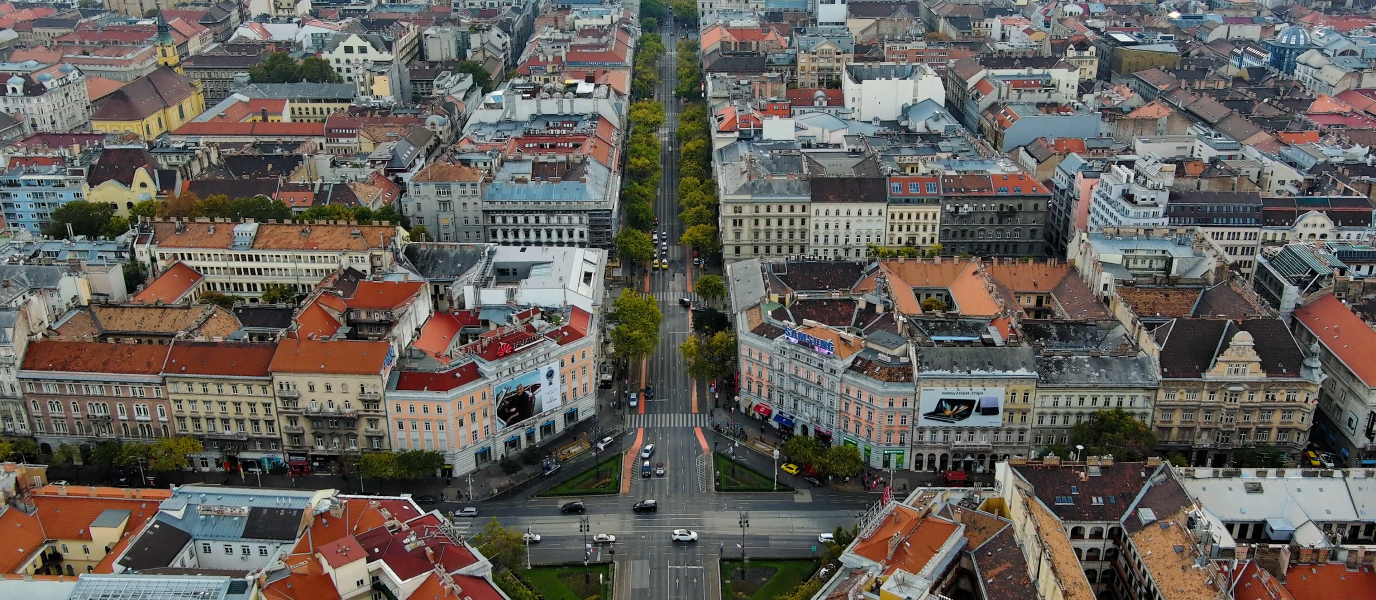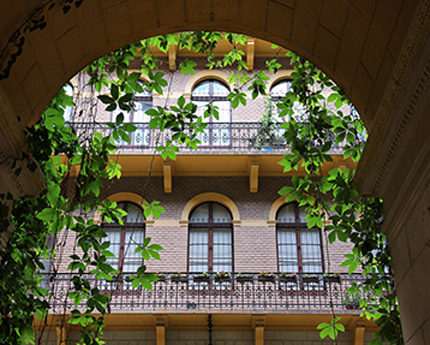One of the most important landmarks in Budapest is St Stephen’s Basilica. The Catholic church stands in a central position in Pest and is a true symbol of the city: a work of art and a wonderful place to listen to organ concerts. Read on to find out more.
The third largest church in Hungary, its full name is St Stephen’s Basilica and Co-Cathedral, since it is the shared seat of the Archdiocese of Esztergom-Budapest together with the Cathedral of Our Lady of Esztergom.
St Stephen’s has a special place in the hearts of all Budapest residents and stands in a key location in the elegant centre of Pest, just a few metres from the Hungarian Parliament.
- History of St Stephen’s Basilica
- Architecture and what to see
- The Basilica and music
- Interesting facts about St Stephen’s Basilica
- The square in front of the basilica
- Where to eat close to St Stephen’s Basilica
- Where to sleep in Budapest
History of St Stephen’s Basilica
St Stephen’s Basilica is a relatively modern construction. Work to build it began in 1851 and did not end until 1905, the year in which it was also consecrated. Plans to build a church, however, can be traced back further in time to the early nineteenth century, when a small parish was formed and funds were raised to build a future church on the site.
The construction process was drawn out by the collapse of the dome ceiling in 1868, which meant that everything had to be demolished and rebuilt from the ground up. The architects behind it were, initially, Jozsef Hild, and after the collapse, Miklós Ybl, one of the most influential architects of the time also responsible for Budapest’s Opera House.
The basilica suffered significant damage from bombing in the Siege of Budapest (1944–1945), during the Second World War. Its walls, towers and the roof all had to be rebuilt. Several subsequent renovations, in the late twentieth century, left the church in its current state.
In terms of its dimensions, St Stephen’s is immense, spanning a length of 87 metres, a width of 55 metres and a maximum height of 96 metres, exactly the same height as the Parliament building. The enormous church honours St Stephen I, the first king of Hungary, who established Christianity in the kingdom.
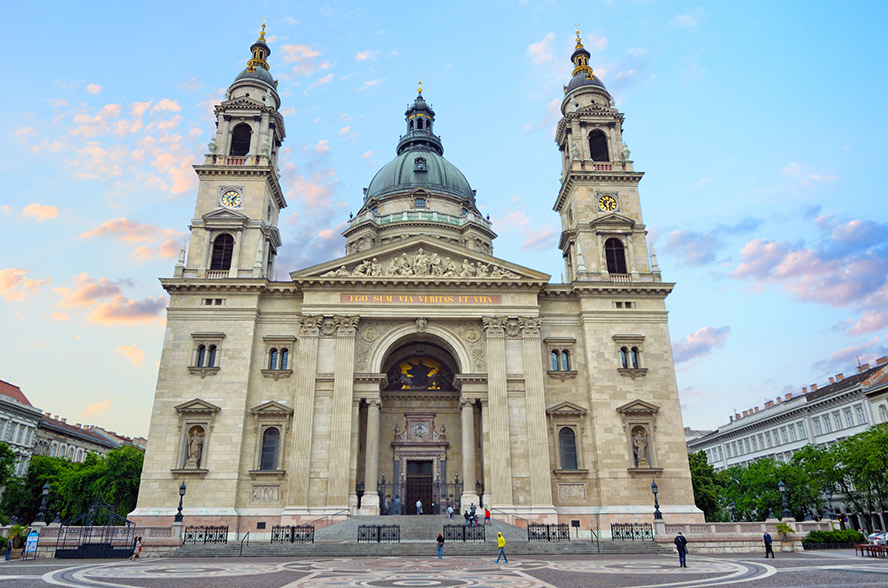
Architecture and what to see
St Stephen’s Basilica is in Neo-Classical style with a Greek cross plan. The main façade features a vast Neo-Classical entranceway and two bell towers on each side.
Inside, the basilica is rich in works of art, with mosaics, statues and paintings by important Hungarian artists. The main treasure housed in the church, however, is the Holy Right Hand, belonging to the uncorrupted King St Stephen, the church’s main relic.
It is possible to climb up to the dome from where there are magnificent 360-degree views of Budapest. You can go to the top by lift or by taking the 364 steps.
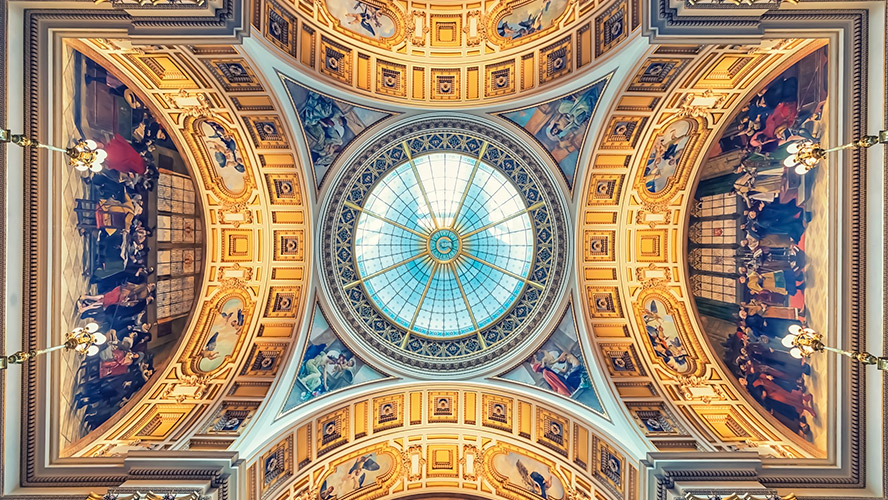
The Basilica and music
St Stephen’s Basilica is also known for its organ concerts and classical music. Throughout its history, the organists of St Stephen’s have always been renowned, even performing abroad.
The basilica currently hosts choral and organ concerts on the church organ, a spectacular piece dating from 1905. Concerts take place several days a week. It is advisable to check the programme to confirm dates.
Interesting facts about St Stephen’s Basilica
The size of the basilica means it can accommodate approximately 8,500 people. Just as immense are the bells of the church. The largest, called the Great Bell of St Stephen’s, is the largest bell in Hungary, measuring 252 centimetres in diameter and weighing 9,250 kilos. It is followed by the Bell of the Blessed Virgin Mary, weighing 3,100 kilos and measuring 178 centimetres in diameter.
The inside of St Stephen’s hides another surprise, however. Ferenc Puskas, the ex-Real Madrid player and greatest Hungarian footballer in history, is buried in the basilica, demonstrating his importance in his birth country.
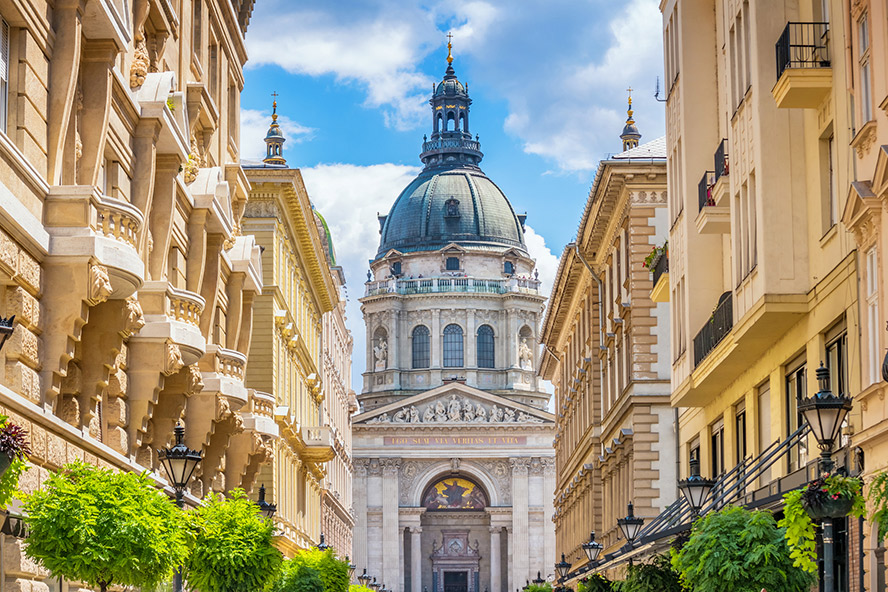
The square in front of the basilica
The basilica’s façade looks out onto St Stephen’s square, a large esplanade from which you can admire the church. The square itself is not particularly attractive, lined by several modern buildings which break with the area’s elegance.
From mid November until the New Year the square is also the site of one of Budapest’s Christmas markets.
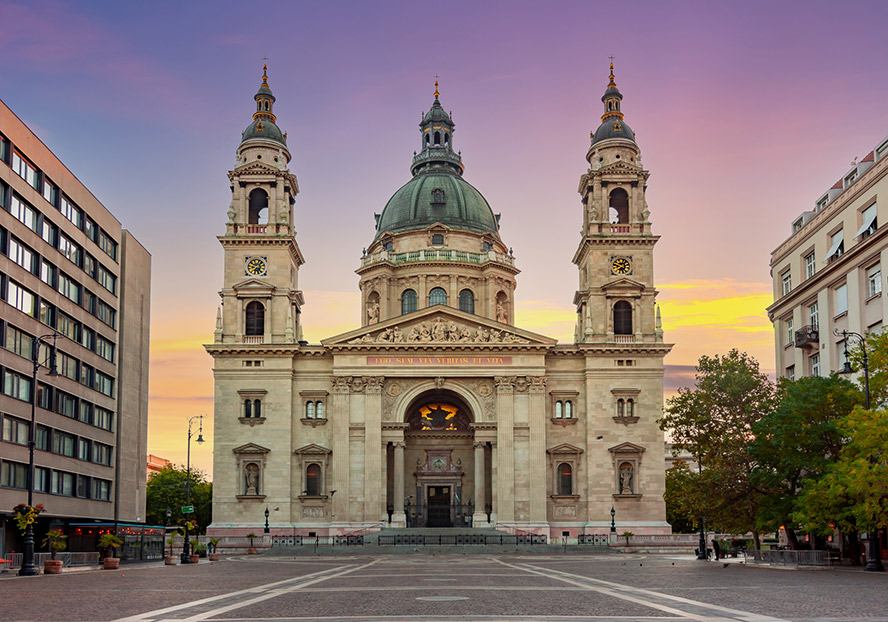
Where to eat close to St Stephen’s Basilica
St Stephen’s is situated in the centre of the Pest area and finding interesting restaurants for a bite is pretty straightforward. Below are three recommendations:
- Hoppá! Bistro: interesting restaurant serving Hungarian food and featured in the Michelin Guide. Excellent value for money. Hungarian flavours with a contemporary touch.
- Meatology: as its name suggests, this is a carnivores’ paradise. The goulash, the ham hock, the duck and the tartare are not to be missed. Right behind the basilica.
- Kisharang Étkezde: this tiny restaurant serving homemade food is a real treat for locals and therefore an excellent opportunity for visitors to sample authentic Hungarian food.
Where to sleep in Budapest
Just a ten-minute walk from St Stephen’s Basilica is one of the most highly-recommended hotels in Budapest. The Barceló Budapest is a fantastic option right in the centre of the Hungarian capital. With 179 rooms, its exclusive, modern design makes it a comfortable and fully-equipped establishment with everything you need for a perfect stay in Budapest.
The hotel’s location is one of the things most appreciated by guests, with numerous places of interest just a short walk away.
























































